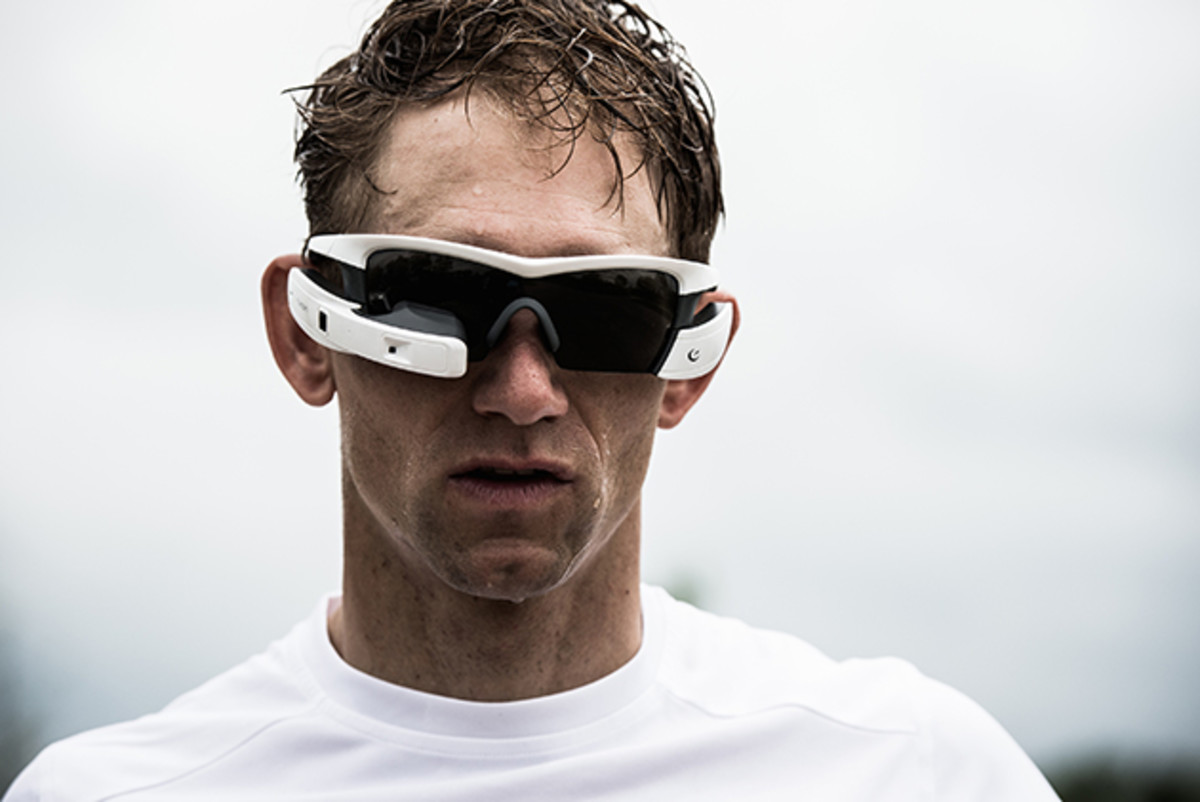High-tech view: Recon Jet gives Andrew Starykowicz unique insights

Triathlete Andrew Starykowicz trains almost in secret up in Illinois, far from the year-round sunshine of states like California and Arizona where many of his competitors live.
“My neighbors think I’m crazy,” he says, as he jumps in nearby ponds, or heads out into the plains west of Chicago on his bike. There he can test out new gear without anyone else in the sport knowing what he is up to. And for the last 15 months he’s been playing around with a head-up display system called Recon Jet.
Effectively the Google Glass equivalent for athletes, Jet, made by Recon Instruments, is a pair of wraparound sunglasses with a screen mounted on the lower part of the right lens. It also incorporates GPS, a camera, an accelerometer and gyroscope, and wireless connection to mobile devices. The screen can show data such as distance, time and pace, or even a map, and shuts off when it detects that the user is no longer looking at it. “It’s almost Star Trek-ish,” Starykowicz says.
Triathlon training is getting increasingly high tech. When power meters debuted in the late 1980s, although they were adopted by elite cyclists, their use was relatively limited outside of those circles until prices began to drop early this century. “Now everybody’s got a power meter,” Starykowicz says. Then GPS went from military technology to automobile navigation technology to an essential part of any athlete’s basic equipment. The popular mobile app Strava, for example, uses GPS to track cyclists and runners training. In 2014, Strava users together clocked up a total of over 1.8 billion miles on two wheels and two legs.
“As much as GPS changed the market when it just came out,” Starykowicz says, “[Jet] is the next leap.”

Starykowicz graduated with a degree in mechanical engineering from Purdue University in 2004 and then balanced a job as a design engineer at Caterpillar Inc. with a budding triathlon career. Though he turned professional in 2006, he didn’t quit his engineering job and dedicate his full attention to triathlons until early 2009. That technical background would seem to make him an ideal fit for both experimenting with and helping develop fitness technology.
And though he was an All-American swimmer and won a Big Ten championship in water polo at Purdue, Starykowicz excels in the most technology-dependent part of triathlons—the bike section. He holds the world record times for the bike split of both the full and half Ironman distances. In 2009 he set the record of 1:58:49 at the Ironman 70.3 World Championship in Austria in 2009, and in 2013 he set the full Ironman record of 4:02:17 at Ironman Florida. Those times work out to average speeds of 28.3 and 27.8 mph, respectively. He also won Ironman Florida in 2012 and has four Ironman 70.3 titles to his name.
Catching him on the bike is already tough, but if Jet offers him any edge, it’s about to get a lot tougher for everyone else.
Though Starykowicz wears the device when he’s out running, he finds the real advantage of Recon Jet is on his bike. Before he would have to take his eyes off the road to look down at a device either mounted on his bike or worn on his wrist, losing a little bit of focus each time. Now he just has to flick his vision downwards slightly, and the Jet’s retina tracking will light up the display. Most of the time he doesn’t even realize he’s checking the device. “I train better because I have more constant feedback without taking my eyes off the road,” Starykowicz says. “It’s subliminal.”
Recon Jet retails online for $699, which might be out of the price range of everyday cyclists but not elite professionals. A top of the range triathlon time trial bike can cost more the $10,000 alone. If using Jet offers even the tiniest advantage, its price tag would surely be worth that.
For many of the other triathletes, Starykowicz’s next few races will be the first time they get a close up look at this technology. “Do other athletes know that I’m using it?” Starykowicz asks. “Probably not. Do other athletes know that I’m developing it? Probably not.” They will soon.
